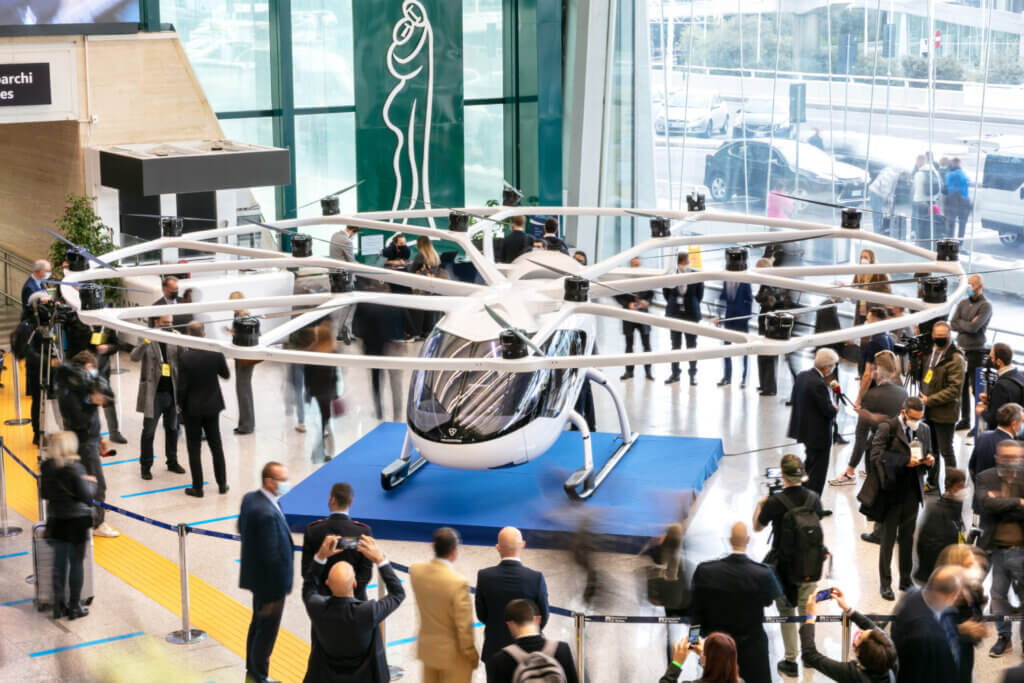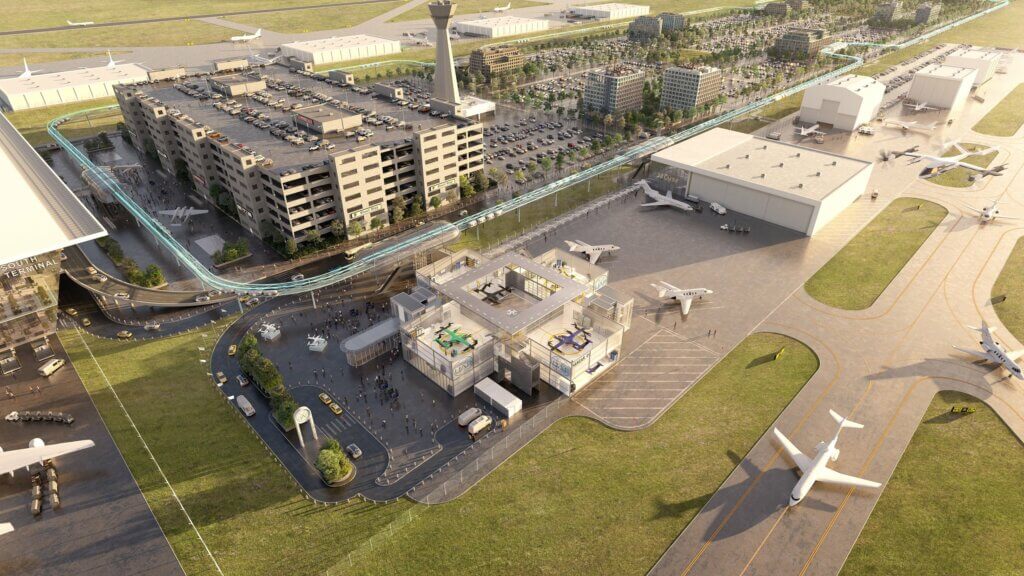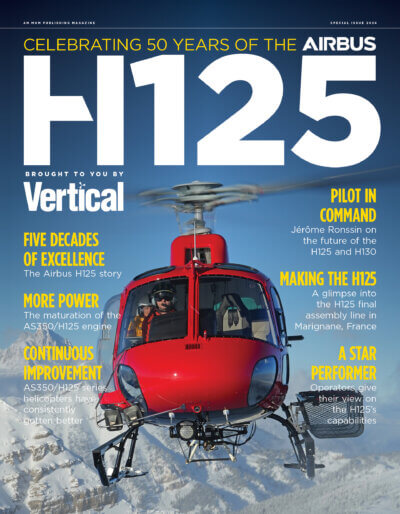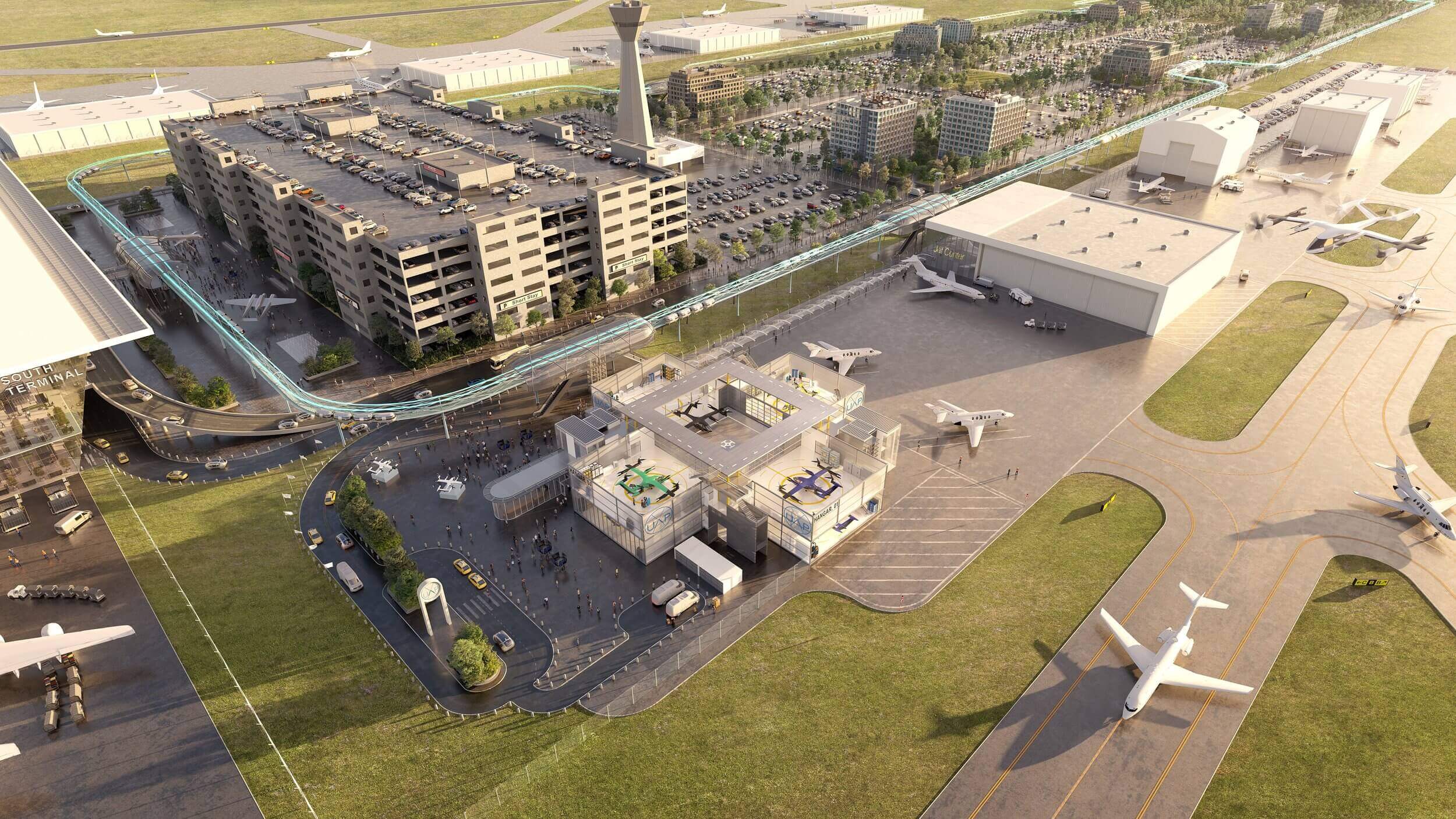As you read this, plans for vertiports at airports are being finalized all over the world and construction on many will start soon.
The issues surrounding vertiports at airports was a panel topic at the AIRTAXI World Congress in October 2023. There is much to consider in creating vertiports at busy, existing airports, including funding, regulations, power management, and security.

Vertical caught up with AIRTAXI panelist Marco Pellegrino, senior adviser of regulatory affairs at UrbanV, an advanced air mobility (AAM) infrastructure company of which Aeroporti di Roma is a founding shareholder. UrbanV was also established by SAVE Group, an airport management and infrastructure firm, Aeroporto di Bologna in Italy, and Aeroports de la Côte d’Azur in France.
“Together with Aeroporti di Roma, we are working at developing a vertiport network for the city of Rome and the Lazio region around it,” Pelligrino explained. “We intend to be a pioneer in AAM worldwide, launching our first commercial route together with our eVTOL partner Volocopter by the end of 2024, making Rome one of the very first cities globally with such services. The first route will connect Rome Fiumicino airport with the city center.”
UrbanV has adopted a modular approach, Pelligrino said, “which will allow us to start with a small vertiport in the initial years, with the flexibility to expand both our terminal and aeronautical capacity over time as the service grows. Design for our first two vertiports has already been completed, and construction will start in the coming months.”
Later in the decade, there may also be a second vertiport at Fiumicino airport, which could address regional routes. Rome Ciampino airport’s vertiport is in the final stages of design.
Airside or landside
The vertiport at Rome Fiumicino airport will be a greenfield development in the airside portion of the airport, the best location to minimize transit times to downtown Rome.
Both airside and landside siting locations for airport vertiports have various factors to consider, according to Gaël Le Bris, vice president of aviation planning and senior technical consultant at global engineering firm WSP.
While Le Bris noted that siting a vertiport on the main air operations area might seem simpler, “it can adversely impact existing activities, hinder the development of VTOL, operations and trigger security requirements incompatible with the seamless experience urban air mobility is promising.”
He added, “On the other hand, a landside vertiport needs its own infrastructure, creates aviation activities where there are none, and requires dedicated resources including power supply, egress/ingress, fire suppression, etc.”
WSP has developed the first vertiport planning documents for airports relating to electric aircraft and hydrogen technology for the Transportation Research Board (TRB).
WSP is also currently assisting the Philadelphia International Airport in adding vertiport plans in the master plan update, and leading the master plan for the Kay Bailey Hutchison Convention Center in Dallas, Texas, which includes a proposed rejigging of the existing vertiport to accommodate eVTOLs. The center is a 10-year project and the city of Dallas has not yet announced when construction will start. In Philadelphia, a new parking garage has to be constructed before the vertiport can be built on top, and that is at least a year away, Le Bris explained.
He noted that while traditional planning approaches can be used to some extent to plan airport vertiports, with the unique needs of eVTOLs, WSP developed specific planning processes and technical guidance as part of its TRB work.
Finalizing regulations
Like others around the world, UrbanV and Aeroporti di Roma are designing their vertiports while regulations for design, siting, operations, and more are not yet finalized.
Pelligrino acknowledged that this approach certainly presents some risks, but said he believes there are many benefits to being among the select few players that have been working with the Italian and European regulators, contributing to their viewpoints and helping shape the way the eVTOL industry will operate.
“In fact, Aeroporti di Roma and UrbanV are in constant dialogue and collaboration with ENAC, the Italian Civil Aviation Authority, and EASA [European Union Aviation Safety Agency] in order to study the many challenges posed by the introduction of AAM into our city and airports,” he said.
In the U.S., some interim technical regulatory guidance on vertiport design (whether at an airport or not) was released by the Federal Aviation Administration (FAA) in September 2022 (Engineering Brief No. 105 on Vertiport Design). Official standards and recommendations are expected in the near future.
However, some aspects of the brief have raised concerns across the aviation community, Le Bris said. “Many criteria are excessively demanding with regard to the expected performance of [eVTOL] vehicles, and these values are inconsistent with the type of operations that most flight operators will be performing,” he explained. “Basically, the guidance adopts conservatively the requirements for transport heliports per FAA AC 150/5390-3C on Heliport Design. But this transport heliport category was developed for facilities accommodating air carrier operators providing scheduled service, while most eVTOL operators will operate on-demand passenger service under part 135. Also, VTOL vehicles under development are … intrinsically more precise and stable than helicopters.”
As Le Bris noted, however, EASA has quickly developed prototype technical standards that reflect an evolution of heliport design standards, and feature “great consideration” for the specificities of VTOL aircraft while making room for performance-based demonstrations.
“We urged the FAA to follow this path,” he said. “The good news is that the FAA has listened to the concerns expressed by the industry and has confirmed that research has been underway to better understand this new class of vehicles and their interaction with the vertiport infrastructure. Standards and recommendations of the future advisory circular are expected to be risk-based. We suggest they include some performance-based flexibility as well.”

Grid capacity
Electrical grid capacity is a challenge for vertiports no matter where they are located, and on this front, UrbanV has partnered with a leading energy company called the Enel Group to investigate solutions.
For his part, Le Bris does not see hydrogen fuel cells as an answer to the grid capacity challenge. The supply chain capacity is one concern.
He added, however, that “interestingly, some OEMs [original equipment manufacturers] working on eVTOL projects for urban air mobility recently looked toward fuel cells. It seems that the efficiency balance between battery and fuel cell could change, at least for some applications. Hydrogen might become more appealing with recent innovations in cryogenic tanks that could make liquid hydrogen storage easier and more portable.”
Who pays?
Pelligrino reported that UrbanV has developed a “very promising concept” that both minimizes capital requirements and maximizes operational efficiency, with the goal of building infrastructure that can be financed by private investments.
“Having said that, in the early years of operation, this industry will inevitably be loss-making, as is common with nascent sectors,” he explained. “To the extent that AAM is viewed as a positive contributor to our cities’ goals of reducing congestion and air pollution, we believe that public funding would be a strong contributor to the acceleration of the initial take-up of the industry. A number of European countries seem to have already taken this stance and are, in fact, financing the growth of an AAM ecosystem and the development of the first infrastructure.”
Other factors relating to airport vertiports
Le Bris also noted that community buy-in and environmental review processes are important.
“AAM cannot be successful without involving local residents,” he said. “The industry can repeat that eVTOLs are quieter and greener, but it needs to do a serious work of local outreach and community involvement ahead of any deployment. Demonstrations in the field can be a good way to show what the actual noise levels generated by these vehicles are — [and] that will be shadowed by the existing background noise at most airports.”
There are also obviously aircraft/airport compatibility and operational safety criteria to be met as well. WSP has shared key findings on this front in two technical papers available from the Vertical Flight Society.
Looking forward, Le Bris said that while stakeholders are still learning about eVTOL aircraft and their integration into the airport setting, he is certain no challenge is insurmountable.
“Existing collaborative frameworks for new airliners can be leveraged by the industry to produce the right practical guidance for airport integration and engineering problem-solving,” he stressed. “Airport safety risk management will also be useful to help airports identify and mitigate operational risks.”





